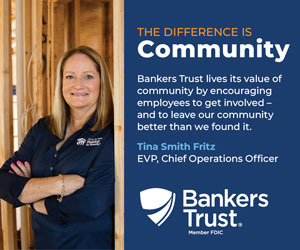On Leadership: Thriving in the age of disruption

Back in my MBA days, the concept of “disruption” wasn’t exactly a household term. Our professor Clayton Christensen’s groundbreaking work, “The Innovator’s Dilemma,” which addressed disruption, was still a few years away. Technology, while exciting, felt more like a distant promise than an imminent threat. Fast forward to today, and disruption from technology, globalization, economic and geopolitical shifts, pandemics and natural disasters have become the new normal. Change is no longer a gradual evolution; it’s a constant, chaotic force that demands our unending attention.
How do we, as leaders, navigate this turbulent landscape? How do we move beyond managing chaos day to day to accept disruption as a normal and expected part of work? And — more importantly — what does it take to see disruption as a gift?
A recent Harvard Business Publishing article, “Building a Disruption-Ready Workforce,” by Vinay Hebbar, quotes Christensen. “In disruptive situations, action must be taken before careful plans are made,” he observed. “Because much less can be known about what markets need or how large they can become, plans must serve a very different purpose: They must be plans for learning rather than plans for implementation.” The author offers some crucial insights on managing disruption, emphasizing the need to equip leaders at every level with the mental agility and skills to embrace uncertainty as a given. This means fostering a mindset that thrives on ambiguity, encouraging calculated risk-taking, and developing the ability to provide clarity in the face of constant flux.
In a recent piece on leadership in 2025, professor Costas Markides of the London Business School echoes this sentiment. “We live in a world of continuous and overlapping disruptions,” he states. “Before we even have a chance to recover from one, another one hits us.” While leaders throughout history have had to deal with change, this relentless pace presents unprecedented challenges that previous generations simply didn’t have to face.
So, how do we keep our teams energized and engaged in this constant state of flux? Battling disruption after disruption can be exhausting. How do we instill a sense of urgency without burning people out? How do we cultivate a healthy unease with the status quo, encouraging continuous improvement without creating a culture of constant fear?
Professor Markides offers a crucial reminder: “Continuous change makes existing assumptions and beliefs irrelevant. You must therefore be ready to change beliefs and ways of operating that have served you well over the years.” This requires a fundamental shift in our approach. It demands a willingness to question long-held assumptions, embrace new ideas and adapt quickly to evolving circumstances.
Ultimately, as Christensen so powerfully demonstrated in the “The Innovator’s Dilemma,” true success lies not in clinging to the behaviors and strategies that brought us success, but in embracing new ways of thinking and operating. This necessitates a change in our own mindset, viewing disruption not as a threat, but as an opportunity for transformation. By actively seeking and nurturing disruptive innovations, even if they initially appear insignificant to the core business, leaders and companies can not only survive but become even more competitive in a rapidly evolving landscape.
I asked local leaders the following question: “In a world characterized by continuous disruption, how can leaders create a constant and positive sense of urgency so that the team is ready to adjust no matter what disruption hits?”

Nola Cartmill, chief diversity officer and legal counsel, Holmes Murphy
First, I would push back on the need to create a sense of urgency. Rather, it is important for leaders to create a constant and positive sense of purpose so that their team is ready to adjust no matter what disruption hits. If a team knows the “why” behind what they are being asked to do, it provides intrinsic motivation and a deeper sense of meaning. This motivation and sense of meaning proves to be invaluable when there is a roadblock placed in front of them. A clear sense of purpose provides a guiding framework, allowing a team to quickly assess the impact of disruptions and realign efforts accordingly. As a chief diversity officer, I am no stranger to disruption, but keeping my team (and myself) focused on our “why” allows us to quickly assess, adjust, adapt and overcome.

Adam J. Kaduce, president, R&R Real Estate Advisors
To create a positive sense of urgency, I have always used genuine passion. When visiting with my team about a new project, I bring my genuine passion and enthusiasm for the project. In my experience, people can see when passion is genuine, and if I’m excited to tackle a project or issue, it is easier to get people on board.
Not all change or disruption is easy to be passionate about, so in those cases I work to connect the initiative to the overall success of the organization and how the impact goes beyond just the people in the room. It is easier to spread that positive sense of urgency if people see the big picture, vision, or understand the “why.”

Erin Kiernan, anchor and reporter, WHO-HD
What’s needed from a leader during chaotic times is consistency and culture. It’s important to clearly communicate expectations and vision while being transparent and empathetic. Television news is all about responding to disruption, both external and internal. On air, I’ve led our team through hours of unscripted coverage during elections, severe weather and school shootings; and behind the scenes through ownership changes, management changes, and reduced workforce. The key to leading in these times is being adaptable, resilient, engaged and authentic. Leadership isn’t about a title, it’s about behavior; doing the work, doing it to the best of your ability and doing everything you can to lift up the people around you.

Bob Riley, chairman, Riley Resource Group
In today’s world, the pace of change has dramatically accelerated, so when disruption happens it can often feel existential. Our human brains are wired to want things to stay the same, so rapid disruption can feel overwhelming or dangerous even when the disruption is not a crisis. Recognizing the polarity of constancy and disruption is crucial; leaders must find tangible ways to get comfortable with the idea of disruption as reality and manage it as part of their routine operations.
One way to do this is to infuse small “waves” of disruption regularly and intentionally within our teams. These could involve brainstorming sessions, innovation work, or running simulations to see how we would react to unexpected challenges. Having small waves of disruption interspersed with waves of predictability on a regular basis helps our teams build the muscle to adapt and respond effectively when real disruptions occur.
Ultimately, the key to managing disruption is to build a culture of resilience and normalize change. When a team is prepared for change and has the confidence to navigate challenges, disruptions become less of a threat and more of an opportunity for growth.

Emily Webb, in-house legal counsel, Wiz Inc.
An adage I’ve always lived by in my professional and personal life is that no one can see around corners. The best leaders embrace the fact that the world is constantly changing and avoid locking into any one system or mentality. Great leaders recognize that emulating past successes, like the lean manufacturing of the 1960s, can stifle innovation. Instead, what has worked best for me is to ignore fads and push my team to embody constant curiosity and exploration. By fostering a mindset of “what if,” my team learns to navigate change, not merely by enduring it, but by actively shaping it. The distinction between good, great, and transformational leaders lies in their willingness to forge new paths rather than tread old ones. In doing so, we not only survive the waves of disruption — we become the catalysts for the positive change that the world so urgently needs.

Suzanna de Baca
Suzanna de Baca is a columnist for Business Record, CEO of Story Board Advisors and former CEO of BPC. Story Board Advisors provides strategic guidance and coaching for CEOs, boards of directors and family businesses. You can reach Suzanna at sdebaca@storyboardadvisors.com and follow her writing on leadership at: https://suzannadebacacoach.substack.com.






